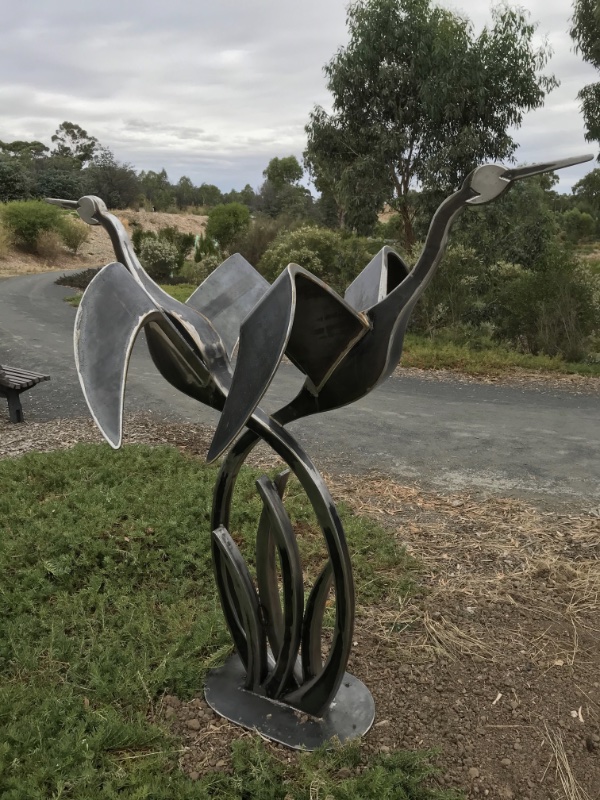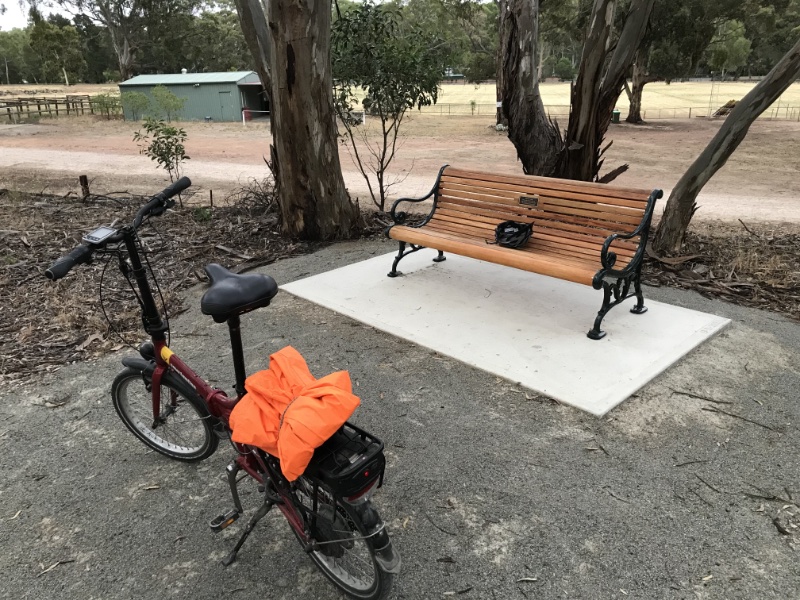|
A similar way in which we behave like sheep is when we see something that is not as it could be, that could easily be made better, chances are that we will just walk by rather than doing something to fix the unsatisfactory situation. Again, I have been guilty of this.
The white-faced herons of the photo on the right is a wonderful memorial to Les Chambers. Many people walk in the Clare Gleeson Wetlands. The sculpture has only been in the Wetlands for a week or so (at the time of writing), but I have already received a number of very positive remarks about it.
This is one of four sculptures by Darren Pattison at the Wetlands.
|
|
|
Often walked this trail with 'Fred'
Fondly remembered by her loving family
John and Malcolm, Sarah and Nigel
It is my bike in the photo. One of the many times I've ridden at least a part of the Trail.
By their works we will remember them
If a person has had a hand in some concrete feature, a public building, a museum, a miniature railway, a park, a trail, a public garden, public artworks, an arboretum, a community shop, a hospital or such then that contribution to society will be that person's memorial.
|
|
On a far more positive note, I've listed many Australians who are trying to do good, to get action toward slowing climate change on another page. There are a great many who are trying to do good, they are generally much less known than those on 'the dark side'.
I would hope that the contribution, positive or negative, will be publicly recognised, if not immediately, at lease later on.
Perhaps our memorials will be in the memories of others, or in the writings and records of others? How will history see you, the reader?

